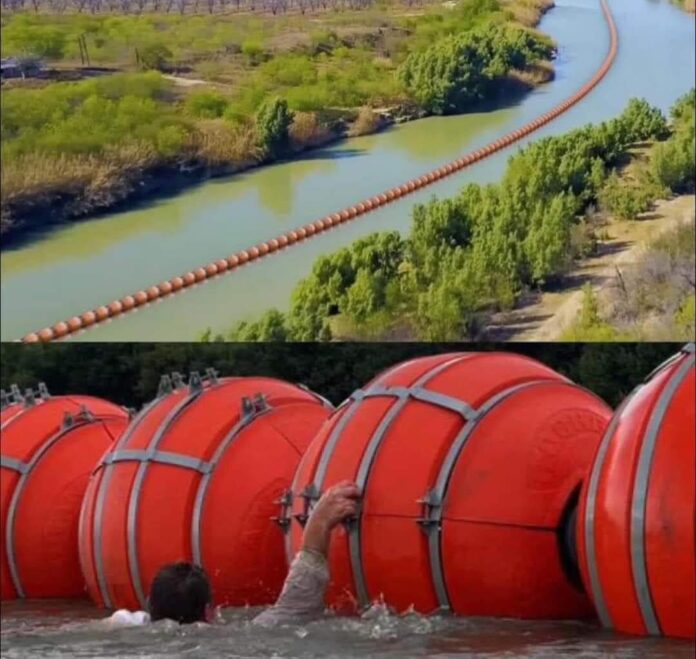Workers place a floating barrier on the Rio Grande, on the border with Piedras Negras (Coahuila), on July 11.
The Government of Mexico has sent a diplomatic letter to the United States this Friday to express its concern about the installations of a floating wall and wire fences that Texas put up in the last year in the Rio Grande and its surroundings. The Texan authorities installed the floating barriers and obstructions in the section of the great river that divides the cities of Eagle Pass (Texas) and Piedras Negras (Coahuila), to prevent the crossing of migrants at the border. The Executive led by Andrés Manuel López Obrador has expressed concern about “the effects of obstruction and diversion” that the fence and the installed barrels can cause.
“[These facilities] can cause [effects] on the normal runoff and floods of the Rio Grande, which are aggravated by the dragging that remains trapped in the fence, especially if it is dragged downstream by any flood,” exposes the Mexican government in the statement. The Texas Administration, led by Republican Greg Abbott, began moving large orange buoys to the site last week, and finished deploying them in the river waters on Wednesday. “[The extension of the buoys] contravenes article 17 of the International Waters Treaty of 1944, which establishes that ‘The use of the international riverbed for the discharge of flood waters or other surpluses will be free'”, has collected by the Government of López Obrador in its writing.
But this floating border is just one of the changes that the border between Texas and Coahuila has undergone. In the last year, the Abott Executive also put up barricades on the international bridge that connects both cities; and installed barbed wire fences on the banks of the river. The Mexican government has also addressed these obstructions, and says it has asked the United States to remove the barrels and fences since June 26. “[The Government asks to remove the barriers installed] due to the effects of obstruction and diversion of runoff towards Mexican territory”, they have stated, and they ask that in the future the area should not be considered again to put this type of elements.
López Obrador has concluded in his letter that any work, “including the clearing of islands and the bed of the Rio Grande”, is endorsed by the International Boundary and Water Commission between the two countries.
Mexico stood out as a transit country last year, reaching record numbers as the place of origin and destination of migratory processes, according to data from the United Nations International Organization for Migration (IOM). As of 2020, the nation has become the second in the world (after India) to see its population march beyond its borders; despite the fact that the number of Mexican migrants has decreased from 12.42 million in 2010 to 11.19 in 2020 —with 97% in the United States. Migration from Mexico to the United States has been the subject of criticism by the authorities of the northern neighbor for years. In January, during the tripartite Summit with Canada, the two executives promised to tackle the problem. A month later, Mexico opposed the restart of the United States immigration policy through the Stay in Mexico plan, a measure that allows non-Mexican people to be returned while they await the resolution of the US authorities.
Source: El Pais






